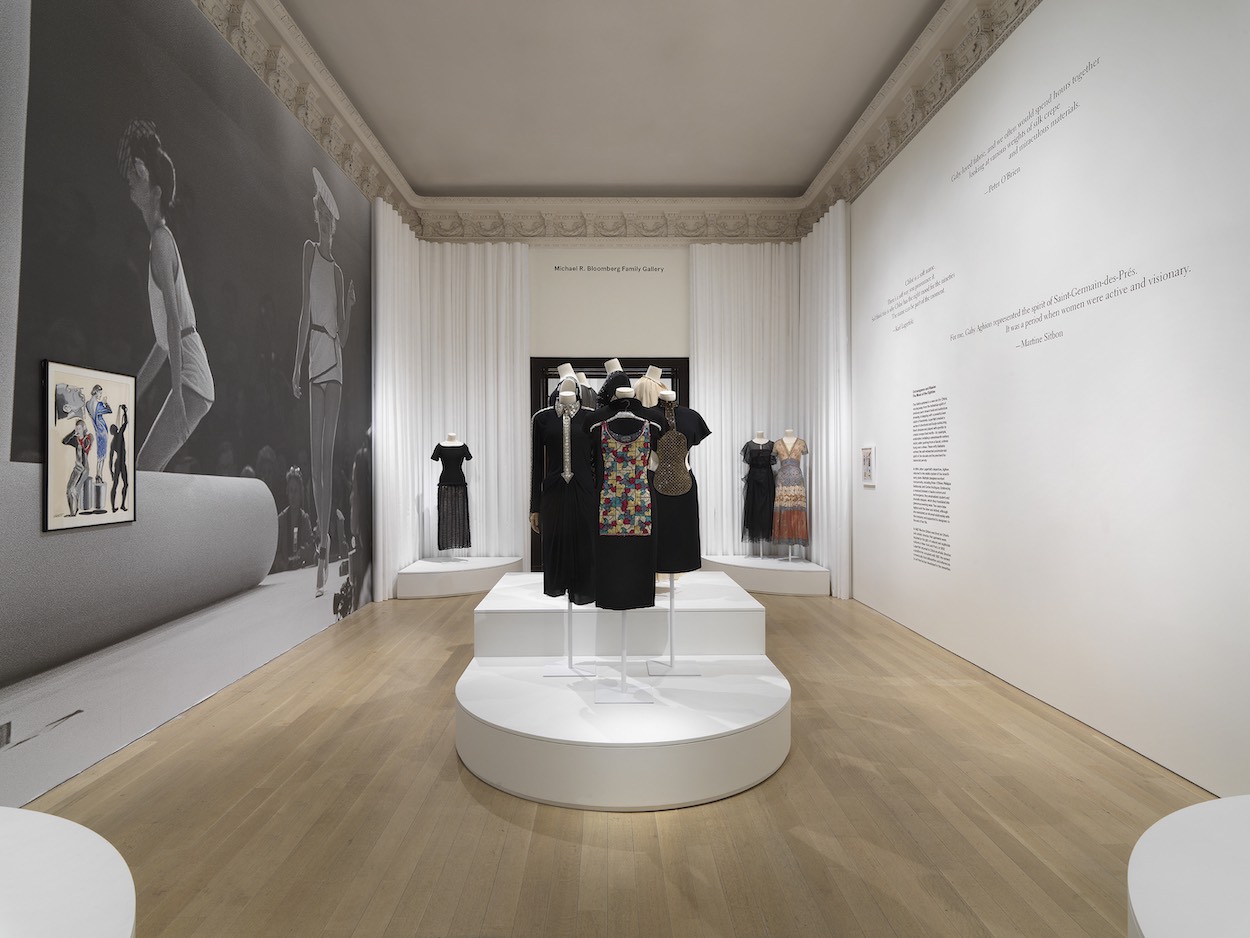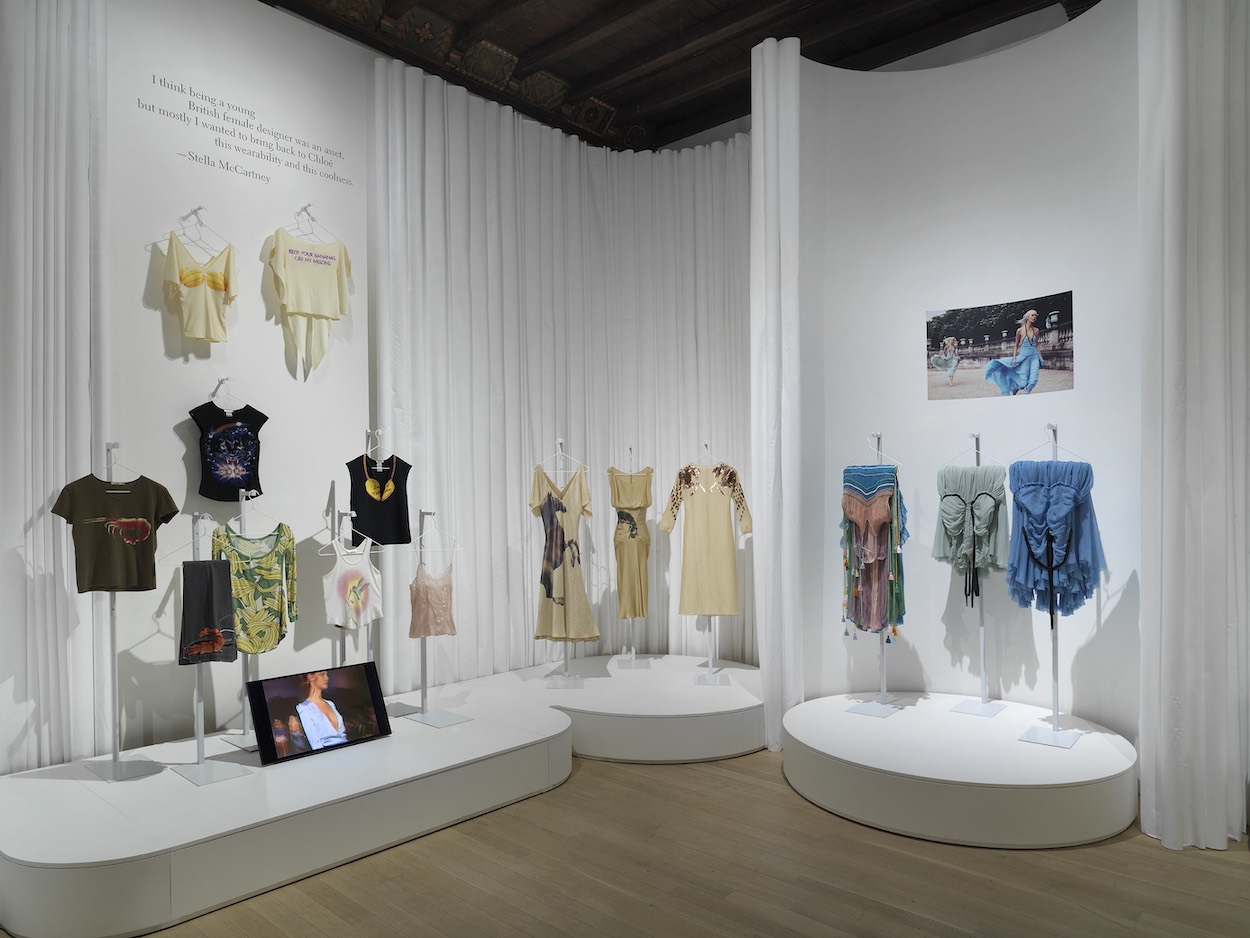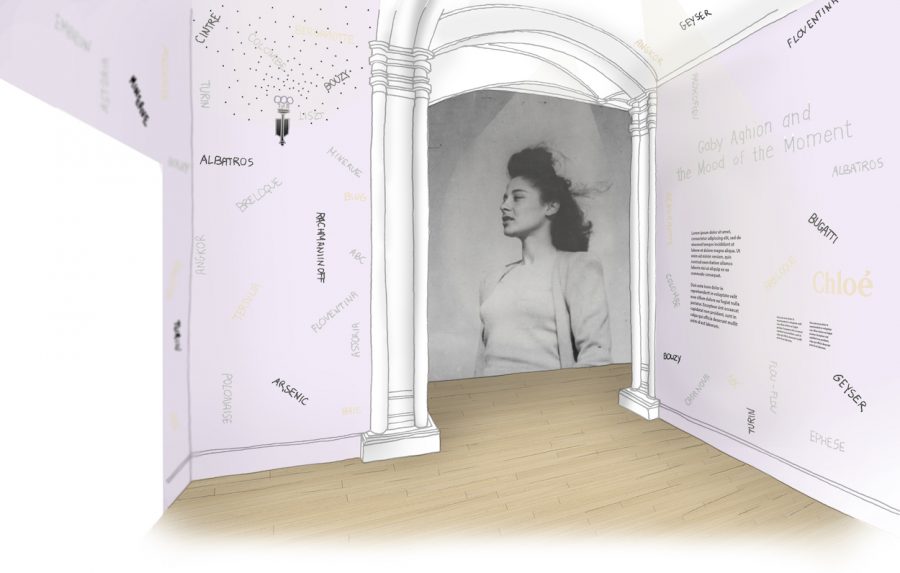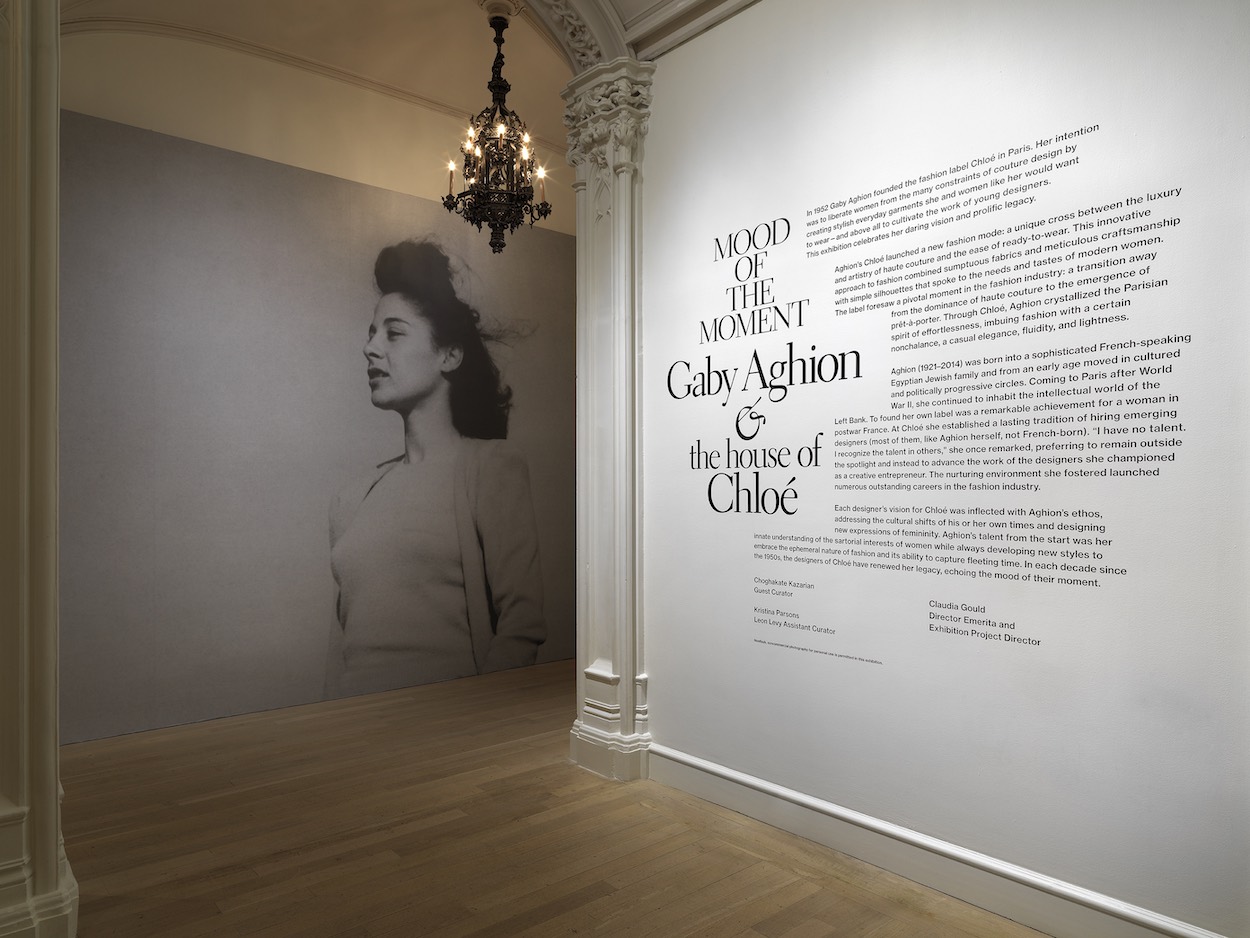It is impossible to overstate the difficulty and pain of the present moment for Jewish people everywhere, including New York City, in light of the recent terrorist attacks led by Hamas against Israel. Thus, the mood was solemn—yet the atmosphere ethereal—at yesterday’s preview of “Mood of the Moment: Gaby Aghion & the House of Chloé.” The Jewish Museum’s latest exhibition is the first retrospective of the 70-year-old house founded by the Jewish Parisian-by-way-of-Egypt in 1952. Since then, Karl Lagerfeld, Clare Waight Keller, Phoebe Philo, Stella McCartney, and Gabriela Hearst have followed in Aghion’s footsteps to shepherd through her visionary perspective of the modern woman and the ways in which the fashion industry must serve her.
This show faces the unenviable challenge of bridging a considerable time-culture gap. Aghion’s vision of modernity centered around breaking out of stuffy salon-style couture shows and into high-end ready-to-wear with corsetless dressing for the modern woman. Compare that to the ‘90s, when McCartney’s irreverent spring/summer 2001 debut featured a “Keep Your Banana Off My Melons” graphic tee inspired by Bill Clinton’s sex scandal.
For that, former museum director Claudia Gould tapped the decorated interior designer Elliott Barnes, a Parisian-by-way-of-New York, to bring understated elegance through spatial storytelling. “In the ‘90s, with changing social values and mores, women were more expressive,” he says. “They’re more expressive than in the 1950s, but the very passionate and liberated woman of the ‘50s, that’s the same mindset of the woman in the ‘90s.” Barnes also posits an interest in sustainability as a through line that transcends changes in creative leadership. A narrative arc links the handicraft of Aghion’s Chloé to the stirrings of environmental concerns in McCartney’s mind during her turn at the brand’s helm, and, finally, Hearst’s championing of deadstock fabrics.
In the show, however, Barnes lets the clothes speak for themselves. He often employs Tyvek, an odorless polyethylene synthetic material used for museum conservation and construction, and lauded for its recyclability. Under the museum lights, it has the elegant, subdued luster of a silk crepe de chine, and recalls the ruffled neckline of one of Aghion’s early dresses, or one of Hearst’s more recent, dreamy blouses. “The installation takes cues from the way a stylist works,” he tells Surface. “A stylist will drape a model, and I thought we could drape the museum.”
“Whether it’s the first or the fifth [exhibition], that doesn’t really matter to me,” Barnes tells Surface about how he crafted the show’s scenography. “What’s important is to understand what the brand is about and what Gaby Aghion was about; to look at her life and her work to find these details from fashion that can be used to inform space and form.”










